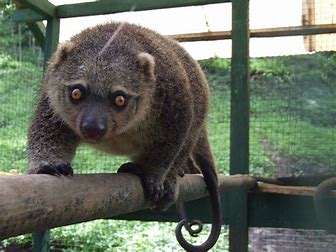Skip to comments.
Researchers uncover prehistoric art and ornaments from Indonesian 'Ice Age'
Science Daily ^
| 4/3/17
| Griffith University
Posted on 04/03/2017 4:34:06 PM PDT by JimSEA
The Australian Research Centre for Human Evolution (ARCHE) team, based in Griffith's Environmental Futures Research Institute, together with Indonesian colleagues, have shed new light on 'Ice Age' human culture and symbolism in a paper published today in Proceedings of the National Academy of Sciences (PNAS).
The study was co-led by Associate Professor Adam Brumm, an Australian Research Council (ARC) Future Fellow, and Dr Michelle Langley, who also holds a fellowship from the ARC, analysed the recovered artefacts, and is the country's leading expert in the study of ancient ornaments and bone technology.
"Scientists have long been curious about the cultural lives of the first Homo sapiens to inhabit the lands to the immediate north of Australia sometime prior to 50,000 years ago -- part of the great movement of our species out of Africa," Associate Professor Brumm says.
"Some have argued that Pleistocene human culture declined in sophistication as Homo sapiens ventured beyond India into the Southeast Asian tropics and the island chains east of continental Eurasia, known as 'Wallacea'.
"However, the onset of new research programs in Wallacea is steadily dismantling this view."
Adding to the 2014 breakthrough discovery of 40,000-year-old cave art on the Wallacean island of Sulawesi, which is said to be some of the world's oldest, is a unique assemblage of previously unknown symbolic objects excavated from a Sulawesi cave site called Leang Bulu Bettue.
(Excerpt) Read more at sciencedaily.com ...
TOPICS: Science; Society
KEYWORDS: culture; godsgravesglyphs; sulawesi; wallacea

Dated to between 26,000 to 22,000 years ago, this humanly modified artefact consists of a drilled and perforated finger bone from an endemic bear cuscus. The hole at one end formerly bore a string, while wear marks on the ornament show that it repeatedly rubbed against human skin or clothing during the period of its use. These facts suggest the perforated bone was suspended for use as a 'pendant' or similar jewelry object. Credit: Griffith University
1
posted on
04/03/2017 4:34:06 PM PDT
by
JimSEA
To: JimSEA
Trigger from a cross bow.
2
posted on
04/03/2017 5:06:52 PM PDT
by
spokeshave
(In the Thatch Weave,..Trump's Wing Man is Truth)
To: JimSEA
Very interesting, but what is an “endemic bear cuscus?”
3
posted on
04/03/2017 6:31:35 PM PDT
by
Inyo-Mono
To: Inyo-Mono
4
posted on
04/03/2017 7:35:03 PM PDT
by
JimSEA
To: Inyo-Mono
Sorry, I posted without the explanation. It’s a small tree dwelling marsupial.
5
posted on
04/03/2017 7:36:59 PM PDT
by
JimSEA
To: JimSEA
6
posted on
04/04/2017 8:14:56 AM PDT
by
Inyo-Mono
To: StayAt HomeMother; Ernest_at_the_Beach; 1ofmanyfree; 21twelve; 24Karet; 2ndDivisionVet; 31R1O; ...
Note: this topic is from . Thanks JimSEA.

7
posted on
10/17/2019 5:27:26 PM PDT
by
SunkenCiv
(Imagine an imaginary menagerie manager imagining managing an imaginary menagerie.)
To: SunkenCiv
8
posted on
10/17/2019 6:04:03 PM PDT
by
Fred Nerks
(FAIR DINKUM!)
To: Fred Nerks
Neat. Thanks! Koalas cute, boars not so much.
9
posted on
10/18/2019 12:02:51 PM PDT
by
SunkenCiv
(Imagine an imaginary menagerie manager imagining managing an imaginary menagerie.)
To: SunkenCiv

The koala is an arboreal herbivorous marsupial native to Australia. It is the only extant representative of the family Phascolarctidae and its closest living relatives are the wombats, which comprise the family Vombatidae. 
Like most marsupials, the Sulawesi bear cuscus is an herbivore, eating only vegetation. Its diet consists mostly of leaves, along with flowers, buds and unripe fruit. Due to the low nutrient level in much of its diet, the cuscus tends to move slowly and spend a large portion of the day resting in order to digest its food.
Both are marsupials, both sleep a lot, neither are bears.
10
posted on
10/18/2019 3:13:26 PM PDT
by
Fred Nerks
(FAIR DINKUM!)
Disclaimer:
Opinions posted on Free Republic are those of the individual
posters and do not necessarily represent the opinion of Free Republic or its
management. All materials posted herein are protected by copyright law and the
exemption for fair use of copyrighted works.
FreeRepublic.com is powered by software copyright 2000-2008 John Robinson




